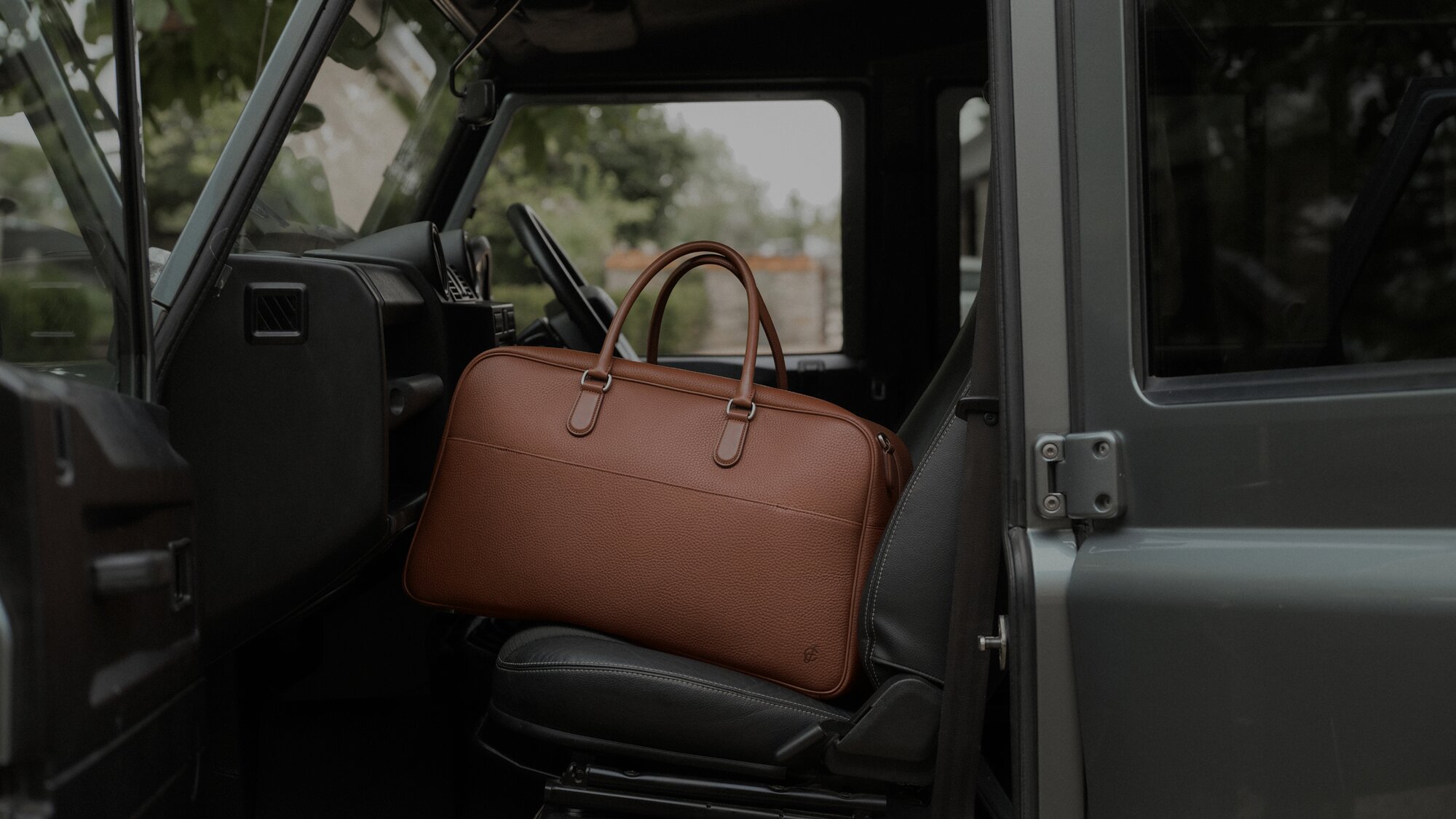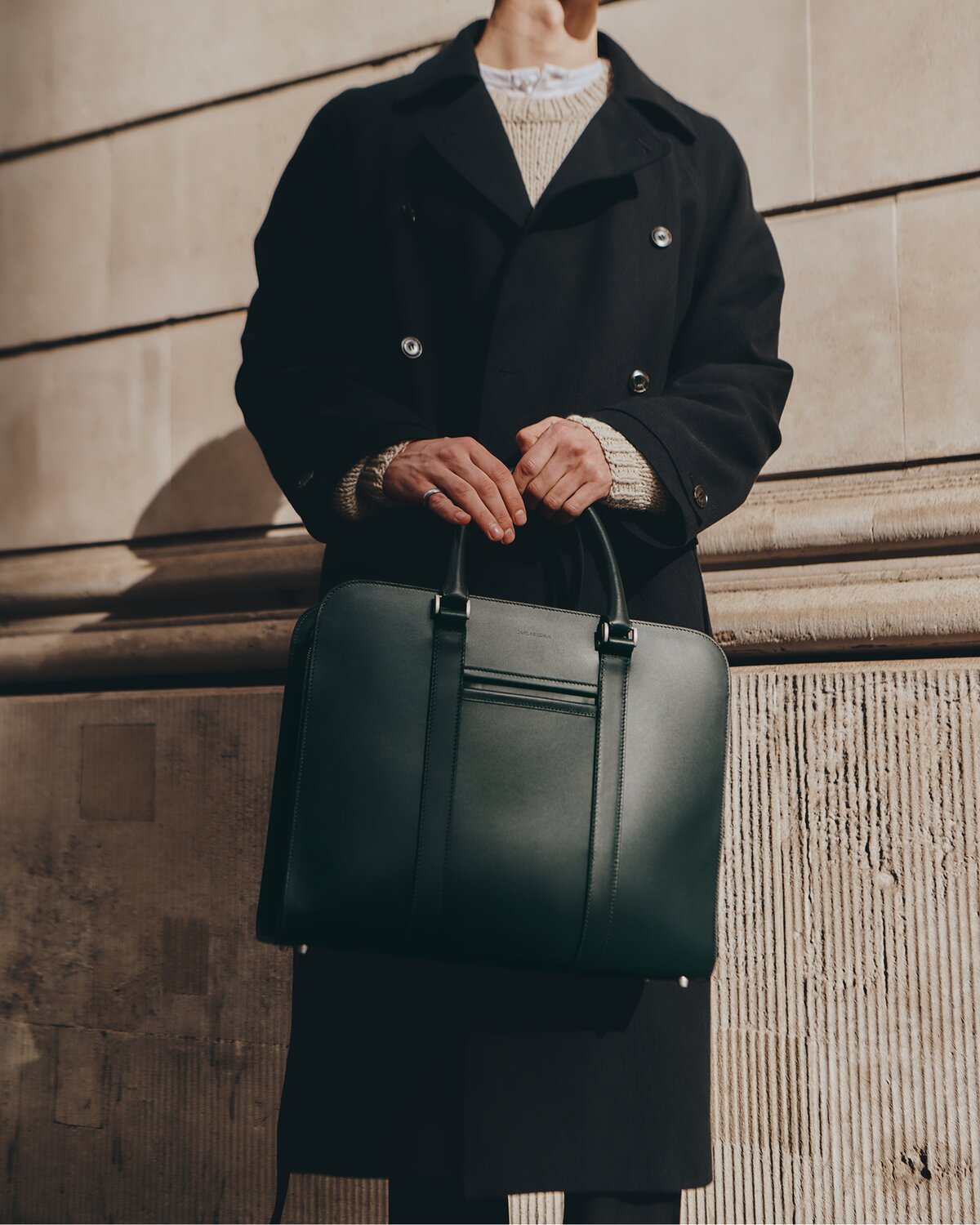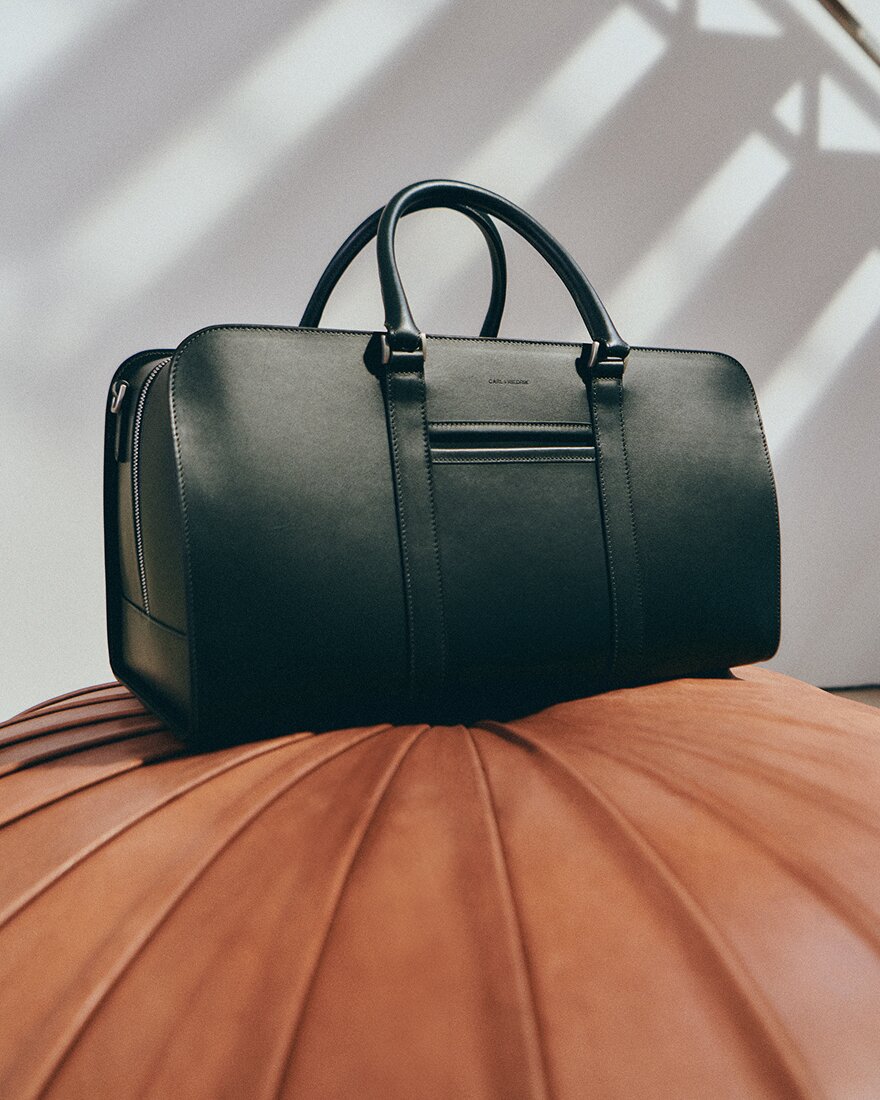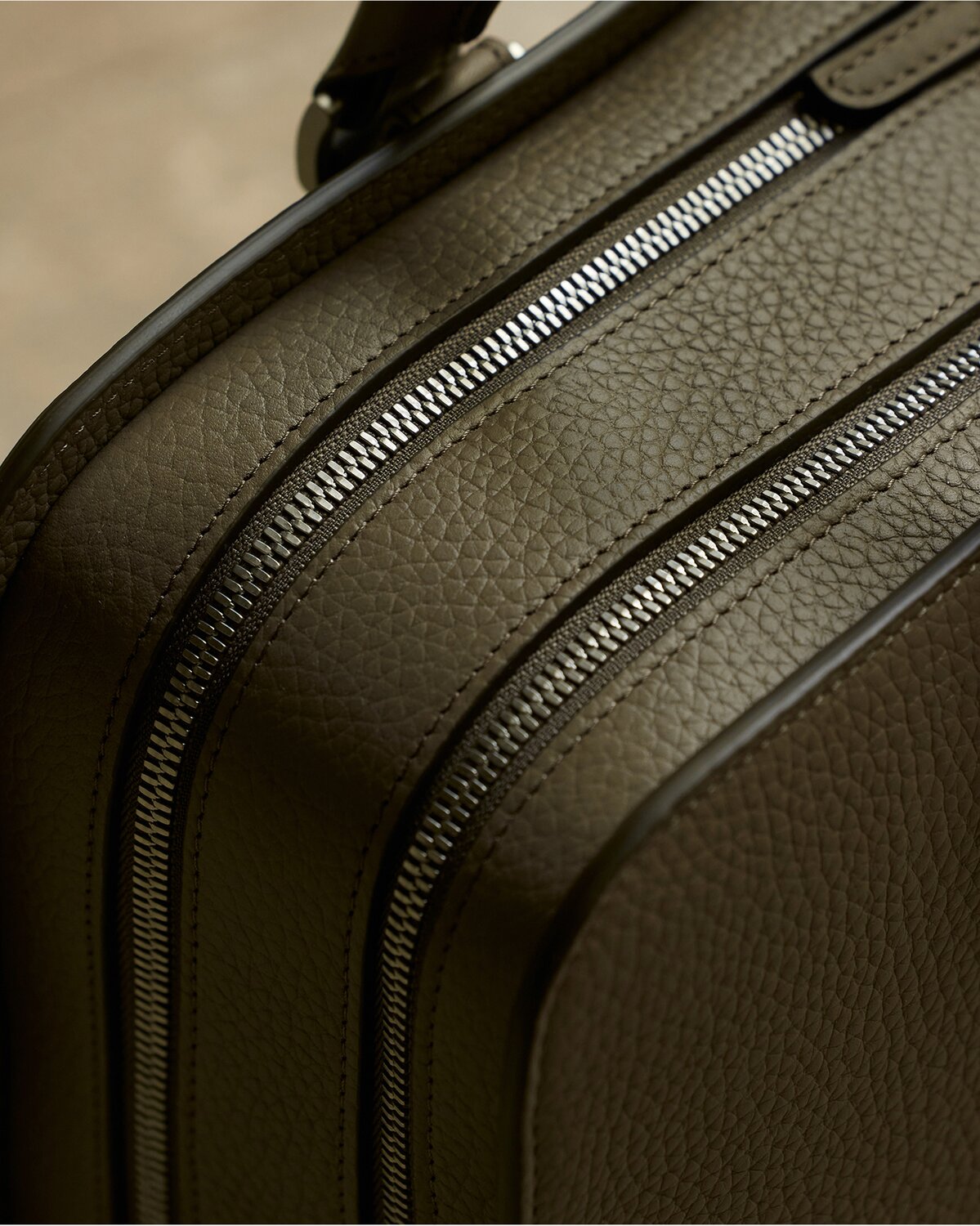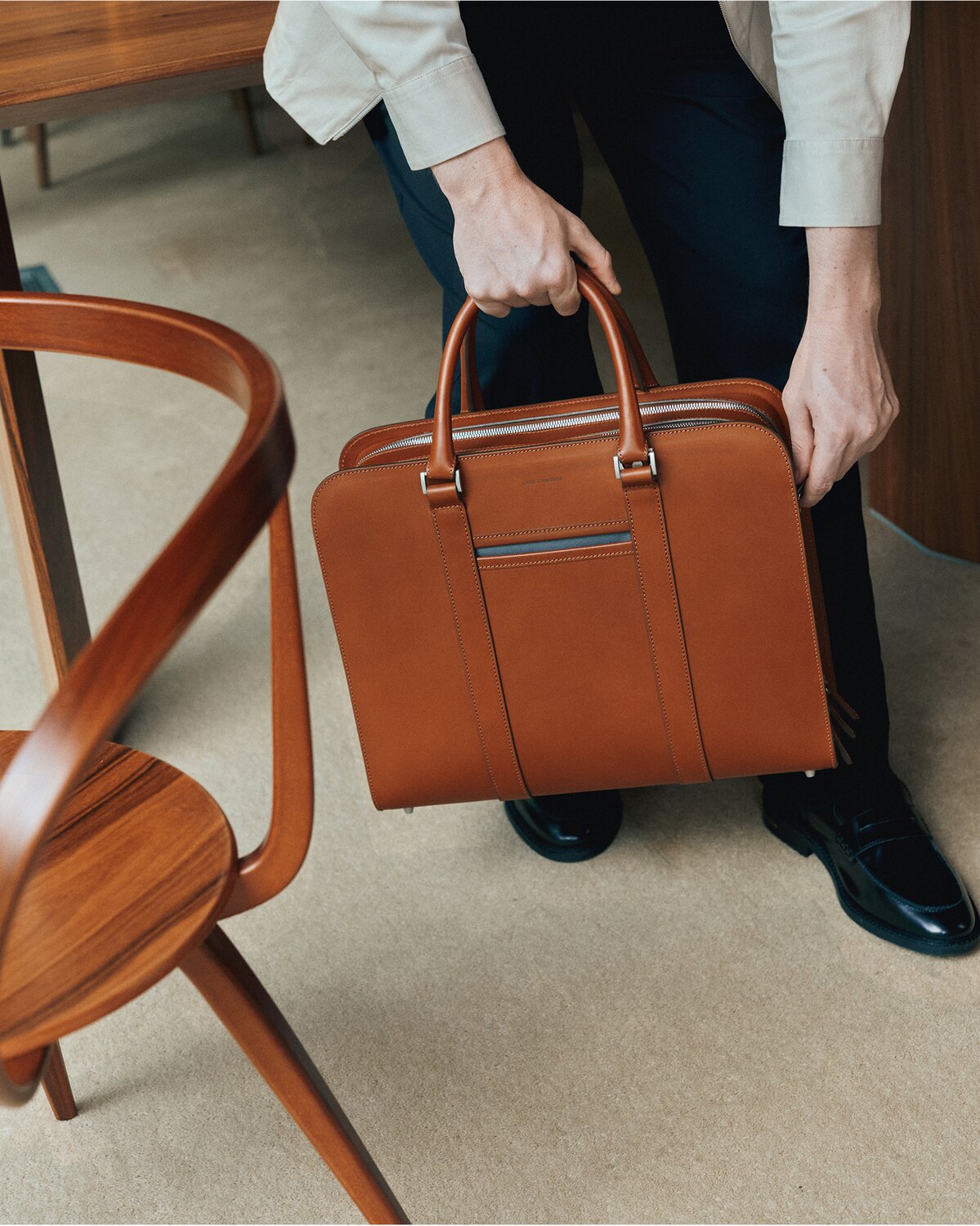Not all leather is cut from the same grain, let alone the same hide. Understanding leather grain helps you pick the perfect product and skip buyer’s remorse, whether you're after a new jacket or a premium backpack.
In this post, we cover everything you need to know about top-grain leather, a moderately opulent option that strikes the sweet spot between luxury and cost.
Contents
What is top-grain leather?
Top-grain vs. full-grain leather: Understanding the differences
Pros and cons of top-grain leather
Is top grain leather real leather?
Top-grain leather vs. genuine leather: Which is better?
Does top-grain leather peel or wear easily?
How to identify authentic top-grain leather
Choosing top-grain leather: Is it right for you?
What is top-grain leather?
Top-grain is the second-best leather grain, only ranking below full-grain leather. The term is a tad deceiving, as it’s neither top-quality nor does it come from the top of the hide.
Leather is made by splitting an animal's hide. Top-grain comes from the outer layer, but not the very top. We call it ‘top-grain’ because the tanner sands and buffs the top layer away, removing the most rigid fibres to create more usable hide. This process also makes top-grain thinner, more malleable and easier to craft, thus slashing production costs.
Although less durable and aesthetically pleasing than full-grain leather, artisans still use top-grain leather for various luxury goods:
- Furniture like sofas, armchairs and couches
- Automotive upholstery and interiors
- Bags, backpacks, purses and handbags
- Accessories like wallets and belts
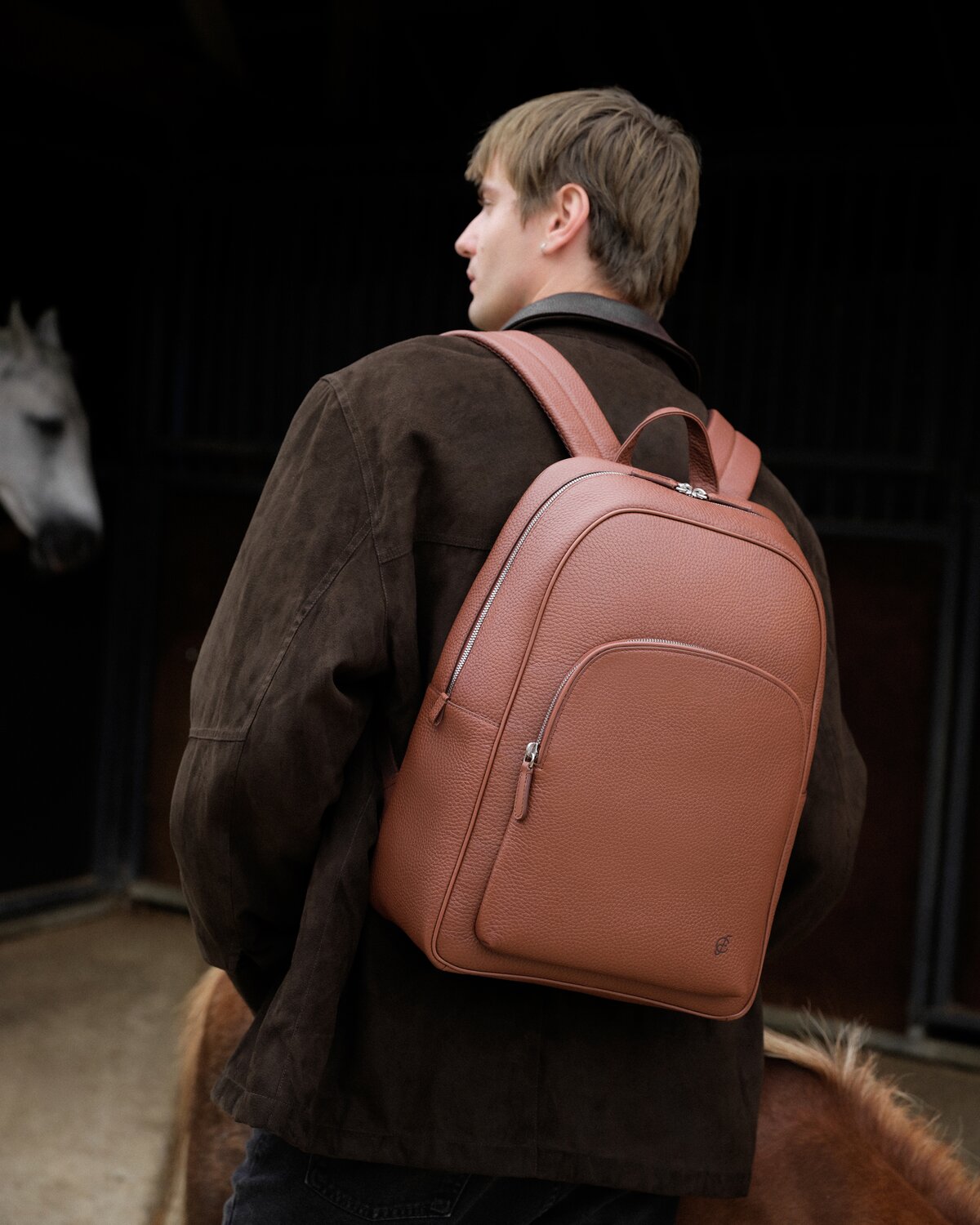
Ayrton Backpack
Top-grain vs. full-grain leather: Understanding the differences
Top-grain’s more costly competitor is full-grain leather. Here’s how the two stack up (though bear in mind each leather type can undergo treatments that alter their characteristics).
| Top-grain leather | Full-grain leather | |
|---|---|---|
| Appearance | Smooth texture, with blemishes sanded out | Visible grain and imperfections |
| Durability | Hardwearing but less durable than full-grain leather | Most durable leather on the market (can last decades) |
| Breathability | Less breathable due to the sanded surface and protective coating | More breathable due to intact natural fibres |
| Patina | Less patina, as the sanded finish nullifies the ageing effect | Develops a rich, characterful patina with time |
| Feel | Soft and flexible with no wear-in period, but less natural to touch | Initially firm but softens with use; original fibres feel natural |
| Maintenance | Less required; easy-to-clean liquid spills. | Requires semi-frequent conditioning; can be difficult to remove tough stains |
| Price | Midrange, more affordable than full-grain yet pricier than other leathers | Expensive because it requires more hide to make and skill to craft |
| Common uses | Bags, wallets, furniture and car seats | High-end bags, shoes, belts and furniture |
If you want a quality, natural aesthetic with durability, top-grain is a solid choice. Full-grain leather is typically for purists seeking the imperfect, authentic, unsanded grain. However, it’s significantly pricier and requires more upkeep.
Pros and cons of top-grain leather
Is top-grain leather a good choice? Comparing the pros and cons can help you decide.
Advantages of top-grain leather
- Value: Delivers great value for consumers not willing to commit to full-grain leather
- Slick aesthetic: Offers an earthy, natural aesthetic with a uniform finish that outclasses most other leather types
- Soft & comfy: Has a thin, malleable texture that doesn’t need breaking in
- Stain-resistant: Can features a protective finish to safeguard against stains that could ruin porous grains
- Easy to clean: Especially compared with porous full-grain leather
Disadvantages of top-grain leather
- Less breathable: Reduced breathability due to its sanded surface, making it uncomfortable in hot weather and less natural to touch
- No imperfections: Some purists feel the blemish-free surface is too perfect
- No patina: Rarely develops a patina, which is a natural result of ageing when leather becomes darker, softer and develops a subtle sheen
- Relatively expensive: Costs more than low-end alternatives like bonded or faux leather
Is top grain leather real leather?
Top-grain leather is genuine leather derived from an actual animal, typically a cow, but sometimes a pig or goat.
But the term ‘genuine leather’ doesn’t equate to quality. There is no global standard that mandates what constitutes genuine leather. Thus, the ambiguous term has become a catchall for any fabric containing even trace amounts of animal hide.
That expensive genuine leather bag you saw online? It could be made from low-grade leftovers or reconstituted scraps. Genuine leather has also become synonymous with split leather, the most inexpensive and inferior cut of any animal hide.
Now, genuine leather isn’t always underwhelming. Top-grain is ‘genuine’, as is the crème de la crème type, full-grain leather. Some artisans describe high-quality grains as ‘genuine’ to reassure consumers they’re not selling synthetic leather. But savvy sellers will also highlight the grain type to seduce informed leather connoisseurs.
On the whole, though, a ‘genuine leather’ tag is a red flag, likely signifying a substandard grade.
Top-grain leather vs. genuine leather: Which is better?
As we know, top-grain is superior to genuine leather, which is commonly low-cost split leather or other shoddy scraps. The only exception is when genuine leather is also full-grain leather. Here’s why top-grain leather trumps genuine leather.
| Top-grain leather | Genuine leather | |
|---|---|---|
| Definition | Quality grain derived from the upper layers, then sanded for a uniform finish | Ambiguous term for a product containing some leather, even trace amounts of low-grade grain |
| Source | Taken from the upper layers (beneath full-grain) of the hide, often from cows | Usually split leather sourced from any animal |
| Quality | Consistently high, inferior only to full-grain in appearance and durability | Varies widely, although expect poor-quality split leather unless explicitly stated otherwise |
| Look & feel | Smooth, uniform, finish and soft to the touch | Varies, but often looks plasticky, rigid, unnatural or processed |
| Durability | Long-lasting leather with good water-resistance | Prone to cracking, peeling, fading and degrading |
| Patina | Rare, and will develop very slowly, if at all | Virtually impossible |
| Price | Fairly expensive, but much cheaper than full-grain | Cheapest option on the market, aside from synthetics like faux leather |
| Label | Advertised as ‘top-grain’ to highlight quality | Ambiguous ‘genuine leather’ tag to hide lower-grade grains |
| Trust factor | A reliable indicator of quality | A red flag, unless it explicitly states a premium grain |
We’re not big on genuine leather. However, consumers who baulk at synthetics and high-cost premium grains may find split leather a happy — albeit mediocre — middle ground.
Just don’t get tricked into paying an exorbitant price for genuine leather. And definitely don’t boast about your ‘genuine leather’ couch to someone who knows a bit about grains.
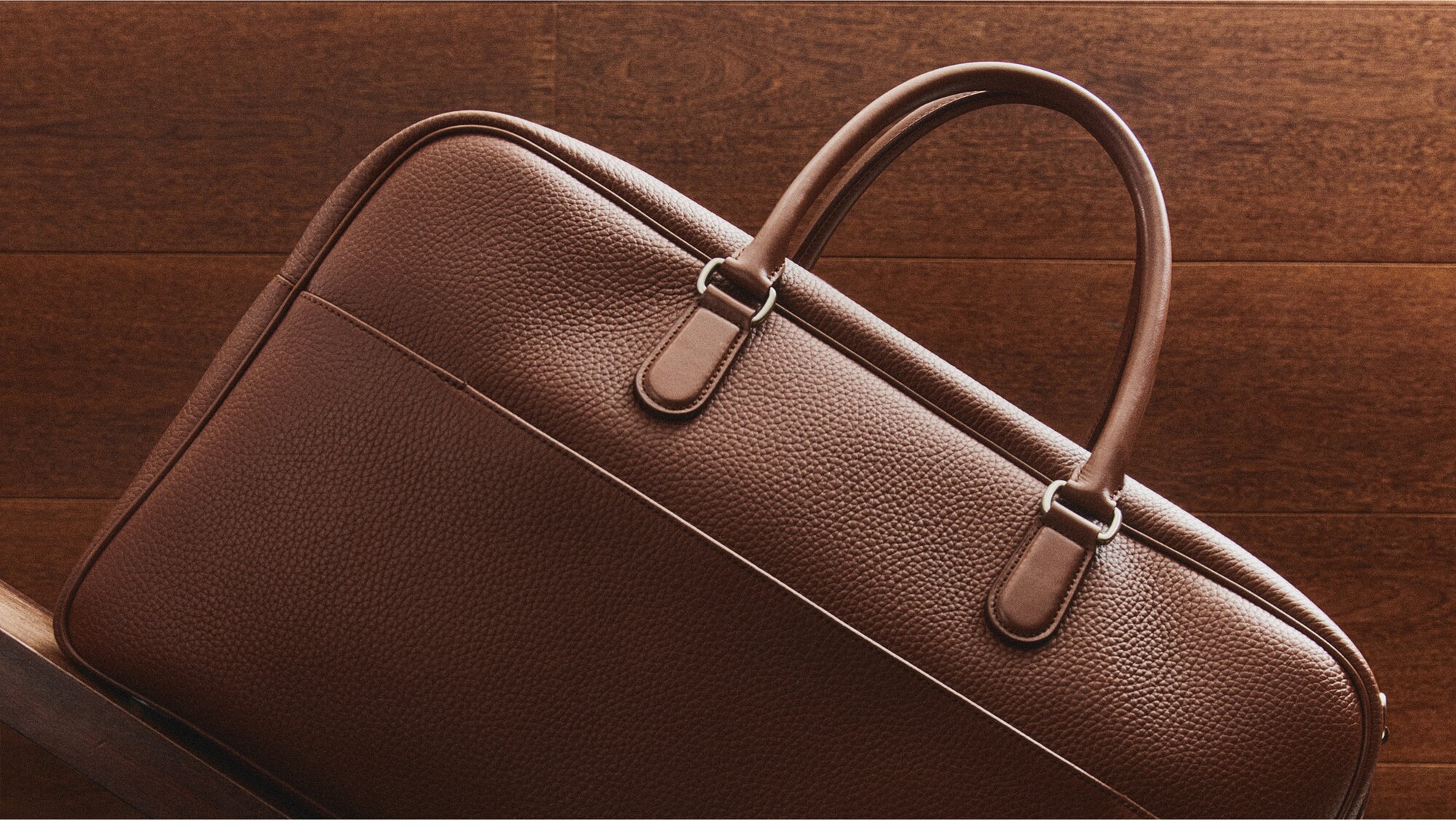
Granville Weekender
Does top-grain leather peel or wear easily?
When a tanner sands and buffs top-grain leather, the strongest fibres get scuffed away, meaning it can become susceptible to scratching and general wear and tear over time.
Peeling can occur with heavy use, but less frequently than on synthetics like faux leather. Nonetheless, top-grain is still a fairly durable, hardwearing choice, especially compared to cheaper alternatives.
The rate at which top-grain leather wears out hinges on your leather care regimen. With a little attention, you can get a quality top-grain product to last years.
Top-grain leather care tips
A commercial leather conditioner extends the lifespan of top-grain leather by keeping it supple and well-hydrated. Leather protector products reinforce the outer barrier to safeguard the surface from spills.
Like all fabrics, environmental extremes wreak havoc on top-grain leather.
- Sunlight: Donning top-grain shoes on a hot day is okay. However, avoid exposing them to prolonged periods of direct sunlight, as this can cause dryness and cracking
- Humidity: Excessive moisture leads to mould and warping. Store your top-grain leather in a cool, dry area
- Heat: Searing temperatures cause blisters and peeling. Don’t leave your top-grain leather bag in a hot car, and keep it clear of radiators, stovetops and campfires
When cleaning top-grain leather, avoid using chemicals such as alcohol, acetone or ammonia. These harsh, heavy-duty cleaners strip away the protective coating to leave an unsightly stain. Instead, use a soft cloth to wipe off dirt, or a commercial leather cleaner for stubborn stains.
Upon spillage, immediately use a clean, soft cloth to blot the area dry. Don’t rub, as you’ll spread the stain around. Let the fabric air-dry, then apply a commercial leather conditioner.
Palissy Double
How to identify authentic top-grain leather
In strictly regulated nations, an explicit ‘top-grain’ label is a safe bet, although Leather Working Group certificates also add extra credibility. Any product described only as ‘genuine leather’ or ‘leather’ should give rise to suspicion.
If you can’t rely on the label, it’s worth smelling the fabric. Generally, top-grain leather has a rich, natural, leathery odour that’s hard to fake. Synthetics, such as faux and bonded leather, often have a chemical or plastic-like smell.
As it’s been vigorously sanded, top-grain leather has a smooth, uniform finish. You’ll have to look closely to spot slight grain variations and tiny natural wrinkles.
Top-grain should feel smooth and supple, yet natural to the touch. A slippery or vinyl-like sensation suggests a synthetic or a cheap split leather top layer. Press the fabric with your thumb and look for a natural crease that vanishes upon release. Synthetics usually retain their shape.
Choosing top-grain leather: Is it right for you?
Love the natural look of leather, but don’t want to spend a fortune on full-grain? Top-grain could provide a nice compromise. As the second-best leather grain, this alluring runner-up offers attractive aesthetics at an affordable price.
The latest product news and travel guides? It's just a sign-up away.
